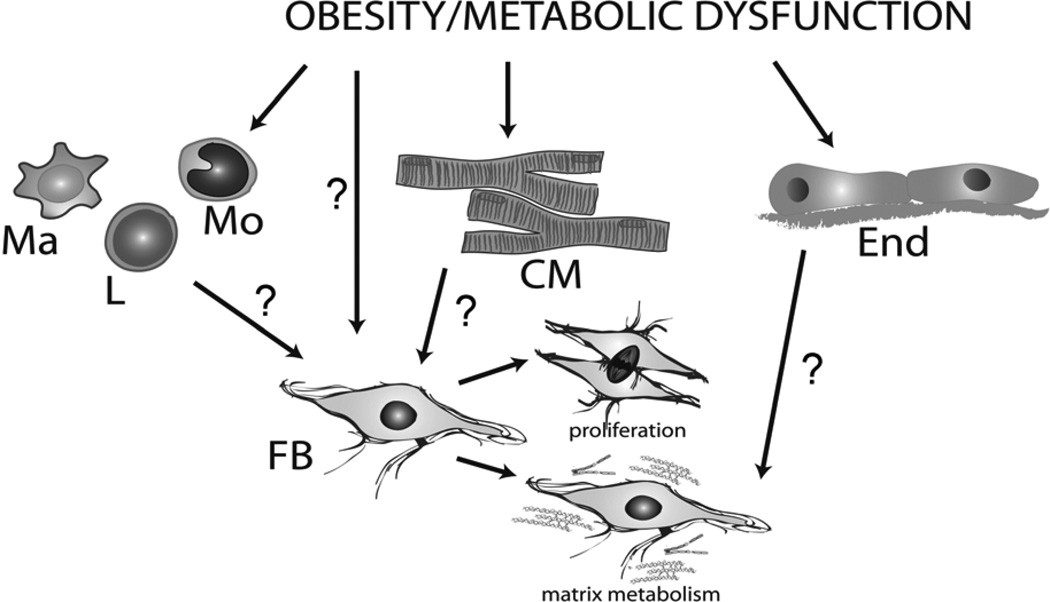Figure 1.
The cell biology of the fibrotic response in obesity and metabolic dysfunction remains underexplored. Although fibroblasts (FB) are the predominant effector cells in cardiac fibrosis, their involvement in fibrotic myocardial remodeling in obesity and metabolic dysfunction is poorly documented. Other cell types, including cardiomyocytes (CM), endothelial cells (End) and monocuclear cells (macrophages/Ma, monocytes/M and lymphocytes/L) may play an important role in obesity-associated fibrosis by activating fibroblasts through secretion of soluble mediators or through contact-dependent actions.

